Webinars have evolved into one of the most powerful tools for authority-building and lead generation. Whether you're launching a product, running an educational series, or driving top-of-funnel engagement, webinars allow brands to speak directly to their audience.
According to a study by MarketingProfs, 84% of B2B marketers report that content marketing has increased brand awareness in the past 12 months, and 76% say it has helped generate demand and leads! However, finding the right topics for a targeted audience to create engagement, multiply touch points and gain market share of voice is not always so easy in the long run.
Choosing the right webinar topic is now a strategic move, not just a content task. A focused, audience-first title can drive signups, keep participants engaged, and turn attention into results. But vague or misaligned topics? They lead to no-shows, early exits, and wasted potential.
For Heads of Marketing and content leaders, the challenge is staying fresh while staying focused. You need to consistently generate valuable, differentiated topics — not just more webinars. Think quality not just quantity. This guide gives you the tools to do just that: real strategies to find your next great webinar idea, using insights, audience signals, and smart collaboration.
Why webinar topics have a direct impact on performance
The link between relevance, engagement, and conversion
Your webinar topic is the first signal of value your audience receives. If it speaks to their current challenges or aspirations, they’ll engage. A strong title acts like a promise, then the content must deliver.

Relevant topics do more than attract viewers — they convert leads. When your content aligns with real pain points, your webinar becomes a trusted resource, not just another online event. Start by deciding who you're creating the webinar for. Once you know your audience, zero in on their pain points. That’s how you turn a generic webinar into something they actually care about. More on this below.
What happens when your topic misses the mark
Low turnout and early drop-off are signs your topic didn’t connect. It doesn’t mean your brand failed — just that the message didn’t hit the right target.
Over time, off-target content erodes trust and audience loyalty, making it harder to regain interest even when future sessions improve.
Creative vs. generic webinar titles
“Understanding Our New Software Update” might be accurate, but it lacks intrigue. Now compare it with: “Revolutionize Your Workflow: Unlock the Power of Our Latest Features.”
Creative webinar titles highlight the benefit, not just the subject. The difference isn’t just in words — it’s in how they frame value. It is a mandatory step for the success of your webinar promotion.
Tap into your audience to find meaningful topics
Dig through sales calls, support tickets, and CRM feedback
The most honest topic suggestions are already in your inbox. Sales and support teams hear firsthand what prospects care about, what confuses them, and what they need help with.
Mining these conversations helps turn recurring pain points into high-impact webinar content.
Ask directly: surveys, polls, and customer interviews
Guessing is risky. Surveys, polls, and direct interviews reveal what your webinar audience really wants to learn. Don’t overcomplicate it — short, focused questions can lead to huge insights.
Asking people for input increases both relevance and participation, because it creates a sense of ownership.
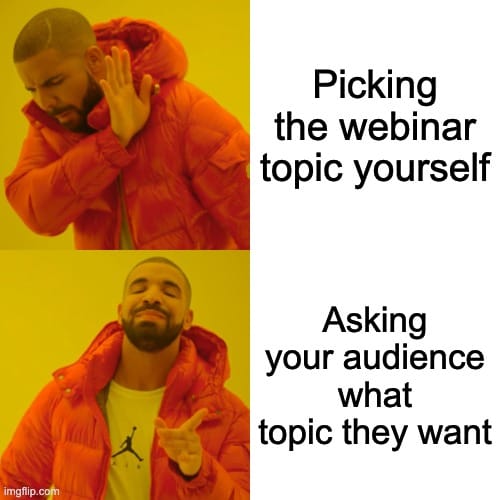
Turn recurring questions into structured content themes
If you hear the same question five times, it's probably worth a webinar. If you hear five related questions, you’ve got a series.
Building content around real, repeated inquiries helps you scale trust while reducing repetitive internal work.
Use your data to make informed decisions
Spot trends in your most viewed, downloaded, or shared content
Your most popular content already reflects audience interest. Check which blog posts, videos, or newsletters performed best — they’re your content goldmine.
Use this insight to build webinars that continue the conversation and deepen engagement.
Discover search intent through SEO and keyword tools
Use keyword tools to find what your audience is actively searching for. Platforms like Google Trends, Semrush, and AnswerThePublic give you the vocabulary and framing that resonate most.
By aligning topics with search behavior, you boost discoverability and relevance before the webinar even starts.
Analyze webinar stats to refine future topic selection
Go back to your analytics. Where did viewers drop off? What sections drove interaction? These clues help you evolve your format and focus.


Easy Webinars With All the Metrics You Need Built-In
Start for free up to 30 registrants. No credit card needed.
Start for freeEngagement metrics are a window into your audience’s attention span and curiosity — use them to improve.
Validate a topic by reviewing historical performance data
Before launching a new webinar, ask: has a similar format or subject performed well before?
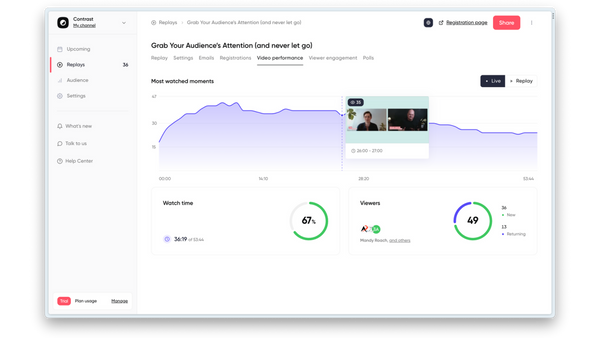
You’re not just reusing ideas — you’re scaling what already works. And if it didn’t work, figure out why before repeating the same mistake.
Expand your horizon with outside inspiration
Analyze what your competitors talk about (and what they avoid)
Your competitors’ content libraries are a strategic source of inspiration. Look at their most promoted sessions, the titles they reuse, and the angles they never touch.
This helps you identify both saturated topics and white space you can own.
Benchmark against best practices from adjacent industries
You don’t need to stay in your niche. Some of the best webinar strategies come from unrelated industries.
When you borrow proven formats and adapt them, you create a fresher experience your audience hasn’t already seen 10 times. Start with what your audience cares about then look sideways for ideas that hit from a new angle.
Track community discussions and social engagement signals
Reddit, LinkedIn, YouTube, Slack — these platforms are filled with unfiltered audience opinions. Read the comments. Note the most upvoted posts. Watch which discussions don’t die.
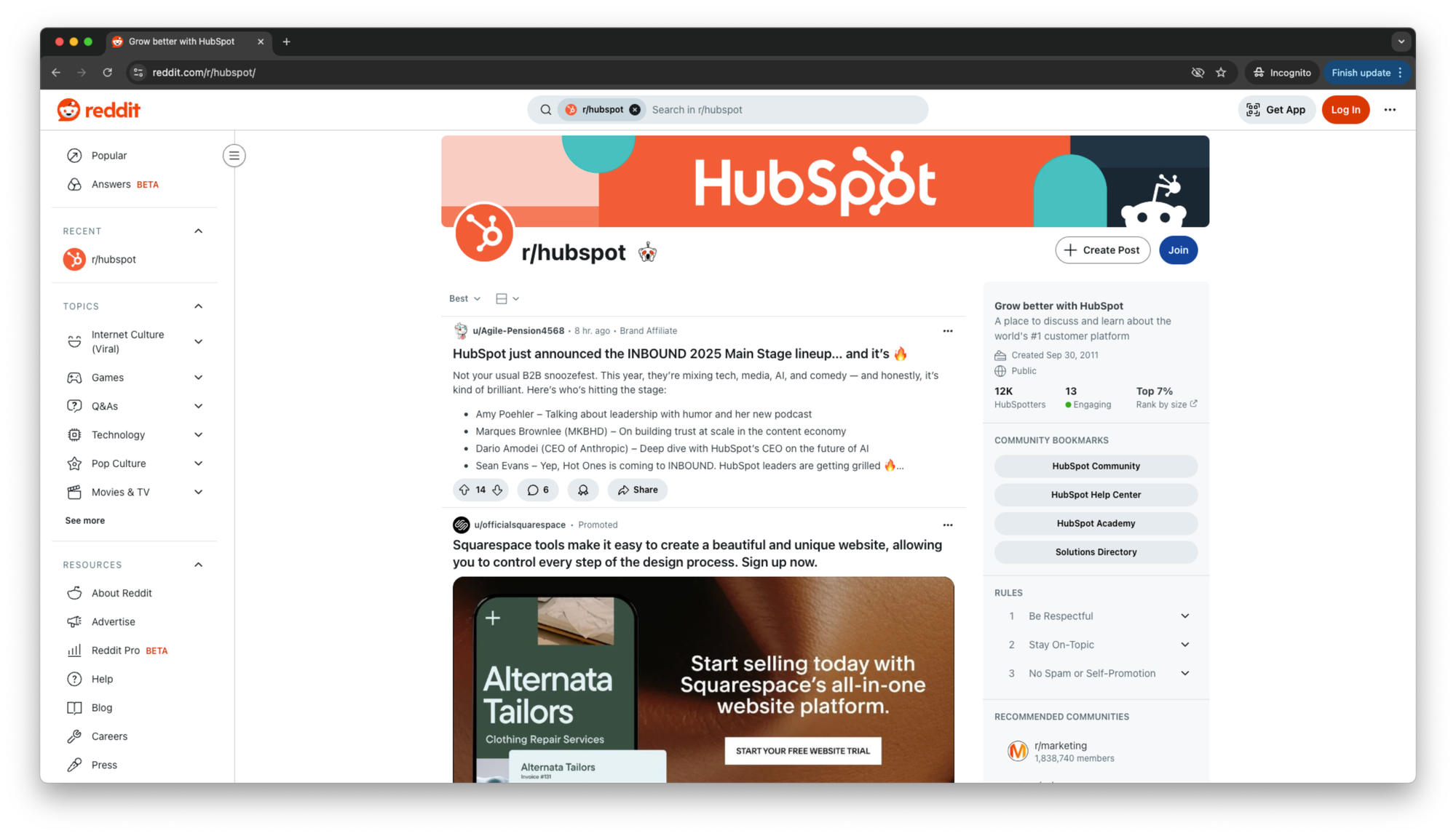
These signals point to the topics people are hungry to learn more about — and aren’t getting enough answers for.
Follow industry trends, product news, and global events
Timing matters. New tech, global changes, or regulatory shifts can all spark content demand. The key is interpreting these changes through your audience’s lens.
Make your webinar hosting the answer to “what does this mean for me and my team?”
Repurpose high-performing content into new angles
Transform blog articles and reports into webinar experiences
You don’t need to start from scratch. Turn your best-performing written content into webinars. Guides, articles, and case studies can all become sessions with added interaction and personality.
Repurposing what’s already working is one of the fastest ways to scale effective content. And after the webinar, flip it again. Turn the session into fresh content to keep the momentum going.
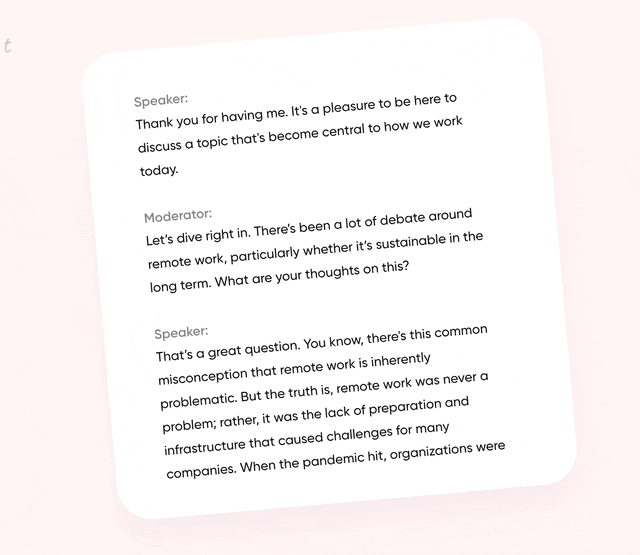
Update previous webinars with fresh insights or new formats
That webinar from two years ago? Still relevant — with a few updates. Swap in new stats, feature a guest, or make it a panel.
Rebroadcasting with enhancements lets you extend the life of proven formats while offering a fresh experience. It is a great way to repurpose past webinars that performed well.
Build a mini-series around a core theme
If one webinar worked, don’t let it sit alone. Create a sequence of connected sessions. This can be a series, a masterclass or a journey.
This format keeps people coming back, deepens learning, and builds trust over time.
Turn your team’s knowledge into content gold
Host internal brainstorms with customer-facing teams
Sales, support, and product folks hear the truth every day. Bring them into the ideation process. A 30-minute sync can reveal months of webinar topics.
Their input turns surface-level ideas into practical, grounded content your audience actually needs.
Use the buyer journey to spot knowledge gaps
Where do your leads hesitate? Pricing? Setup? Migration? Use those friction points as prompts for focused, problem-solving webinars.
Targeting knowledge gaps turns webinars into true conversion tools, not just branding exercises.
Connect topics with product launches or strategic initiatives
Webinars are perfect for rollouts, but only if they’re useful. Don’t just announce a new feature. Teach people how to benefit from it.
Make the session about value and outcomes, not specs. That’s what keeps people tuned in.
Systemize your topic ideation process
Define webinar types: educational, inspirational, demo, Q&A
A clear structure makes brainstorming easier. Most webinars fall into four effective formats:
- Educational: frameworks, tips, “how-to” content
- Inspirational: success stories, leadership discussions
- Demo: product walkthroughs and practical feature showcases
- Q&A: interactive sessions driven by audience questions

Create interactive webinars on Contrast
Start for free with up to 30 registrants. No credit card needed.
Start for freeDefining the type of webinar from the start keeps your team aligned and content purposeful.
Balance evergreen content with timely or seasonal angles
Some topics never go out of style — others need to hit fast. The best webinar strategies blend timeless advice with current events.
A healthy mix of both gives you relevance today and value tomorrow.
Build a quarterly topic roadmap aligned with business goals
Without a plan, content becomes reactive. Align your webinar calendar with your product roadmap, campaigns, or sales targets.
This turns webinars into a business growth engine, not just extra content.
Use technology to fuel smarter topic discovery
Leverage CRM and analytics tools to uncover audience intent
You already have the answers — in your CRM and analytics. See what content your leads are reading, what pages they visit, and which features they care about.
Let real behavior guide what topics you create next.
Automate keyword, trend, and competitor monitoring with AI
You don’t need to manually track the world. Tools like SparkToro or Exploding Topics surface what your audience is searching for before it explodes.
Let AI help you stay ahead of trending topics without burning time.
How a solution like Contrast can help streamline ideation
Ideation doesn’t stop at ideas. Platforms like Contrast centralize your performance data, audience insights, and past webinars in one place.
This gives your team a clear feedback loop so you can stop guessing and start scaling.
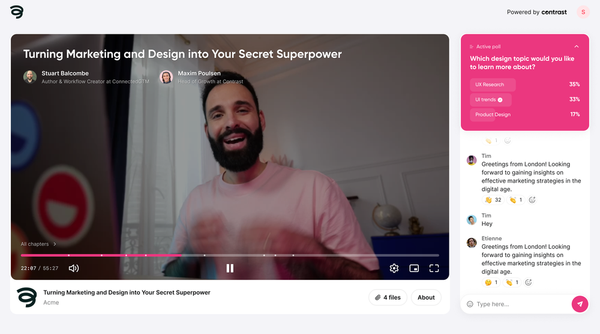
Add gamification and interactivity to surface fresh ideas
Use live polls, quizzes, or contests to crowdsource topics
Let your audience shape your content. Run polls during webinars, post quizzes on social, or host contests to gather topic suggestions.
People love to contribute — and they’re more likely to attend what they helped build.
Reward topic suggestions from your community or team
You don’t always need a big incentive. Public recognition, a co-hosting role, or a simple shoutout can spark more contributions.
A collaborative culture creates better ideas — and stronger buy-in.
Collaborate to go further
Co-create webinars with partners, clients, or industry voices
Partnerships expand both reach and creativity. Co-hosting with a brand or client adds depth and introduces you to a wider audience.
Use these collaborations to explore new themes and increase visibility.
Feature format: share the stage with other experts
Webinars don’t need a single voice. Bringing in a guest speaker offers a new point of view and builds credibility.
It also helps with distribution when your guest promotes the event to their followers.
Use collaborations to cross-pollinate ideas
Every guest is a chance to learn. Watch how they teach, tell stories, or answer tough questions — and apply those techniques yourself.
You’re not just co-creating — you’re evolving your content strategy.
Processes to turn an existing idea into a creative one
Adapt the message to a specific use case
Broad topics rarely drive action. Narrowing your focus to a specific segment — like remote teams or SaaS marketers — makes your message more relevant and impactful.It’s not about changing the idea, it’s about positioning it where it resonates most.
Convert into a “how-to” format
Context is nice, but people need direction. Reframing your topic as a step-by-step tutorial adds clarity and boosts perceived value."Why webinars matter" becomes "How to host a webinar that converts in 5 steps" — and now it’s actionable.
Analyze your most viewed FAQs to uncover real content demand
Your landing pages and FAQ sections are full of topic signals. If a question is consistently viewed or engaged with, that’s a sign it deserves a deeper dive.For example, a high-performing FAQ on “pricing for teams” might become a full webinar on ROI and value calculation.
Be focused on the next steps
Every great webinar should lead somewhere. Whether it's a follow-up resource, product tour, or internal training, your content needs to point toward the next action.Clear takeaways turn passive viewers into active participants.
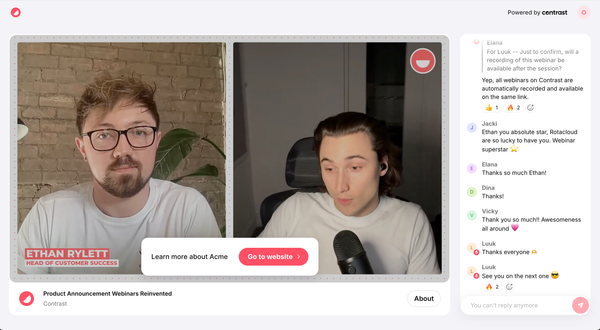
Merge two ideas together
Struggling to stand out? Combine themes. Blending two relevant topics, like AI and onboarding, can result in original angles that set your session apart.These hybrid ideas are often more unique and search-friendly.
Ask the public
Don’t overthink it. Your community on Slack, LinkedIn, or via email can be a goldmine of ideas. A simple poll or comment prompt can validate a direction before you invest time building the full session.
Listen to cross-platform signals to guide your next webinar
It needs to be repeated. Your audience is everywhere. Social platforms, comment threads, and search queries reveal exactly what people are curious about in real time. Track engagement on your own posts or competitor content to spot recurring themes, pain points, and trending questions.
This type of listening helps you stay relevant and responsive, especially when topics evolve quickly or new challenges emerge. Analyzing virtual event data helps identify qualified prospects and accelerate the sales cycle
Make sure your topic is worth your team's time
Evaluate relevance, differentiation, and audience fit
Before you build anything, check the basics. Does the topic solve a problem? Is it unique? Does it match your audience’s interests?A good idea without fit is just noise. Relevance is what earns attention and trust.
Check internal availability (speakers, resources, timeline)
Execution matters. If you don’t have the right team or tools ready, even the best topic can flop.Better to delay and do it right than launch a half-baked session that misses the mark.
A/B test topics via email, LinkedIn, or mini content drops
Low-effort validation is smart strategy. Test headlines in your newsletter, run polls on LinkedIn, or try short-form content to gauge topic interest.High clicks, replies, or shares? That’s your green light to move forward.
Conclusion
Finding your next webinar topic doesn’t need to be a guessing game. With the right structure and sources of insight, the process becomes scalable, strategic, and even collaborative.
From analyzing FAQ traffic to listening on social media. From repurposing top content to co-creating with partners. Every tactic you apply builds not just a list of webinar ideas, but a deeper understanding of your audience’s needs.
Great webinar content starts by identifying what’s timely, what’s valuable, and what’s actionable. The rest is just smart execution.
And when you’re ready to move fast. From brainstorming to publishing — Contrast helps you build, brand, and scale webinars that don’t just perform once… but drive growth again and again.
